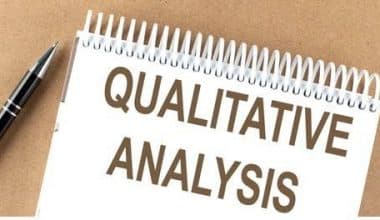When asked to define performance management and monitoring, most people would say it is the process of guiding an organization toward the achievement of its long-term goals. Measurement and assessment, outcomes, improvements, and so on can all be accomplished with a variety of instruments and methods. In this article, you’ll learn about employee performance management tools and network performance management tools, two of the most common kinds of performance management software used by human resource managers.
What Are the Performance Management Tools?
The performance management tool is a process that helps an organization identify and track the progress of its employees. It can also be used to help set goals and objectives for employees and to assess their development over time. There are many different types of performance management tools available, but some of the most common include 360-degree feedback, employee goal setting, and performance reviews.
Application Performance Management Tools
Application performance management (APM) tools are designed to help IT professionals manage the performance of their applications. These tools can be used to monitor application performance, identify issues and bottlenecks, and troubleshoot problems.
There are a variety of APM tools available, including both open source and commercial solutions. Some of the most popular APM tools include AppDynamics, New Relic, and Dynatrace.
When choosing an APM tool, it is important to consider your specific needs and requirements. Some factors to consider include the size and complexity of your application, the environments it is deployed in, and the type of monitoring you require.
Tools for Network Performance Management
As more and more businesses move their operations online, the need for effective network performance management tools becomes increasingly apparent. Without these tools, businesses run the risk of poor network performance and lost productivity.
There are several different network performance management tools available on the market, each with its unique features and benefits. Here are some of the most popular options:
#1. SolarWinds Network Performance Monitor
SolarWinds is one of the leading providers of network performance management tools. Their Network Performance Monitor is designed to help businesses troubleshoot and resolve network issues quickly and efficiently. It offers real-time monitoring, comprehensive reporting, and alerts to help identify and resolve potential problems before they cause downtime.
#2. Cisco Network Management Tools:
Cisco is another leading provider of network performance management tools. Their offerings include a variety of products designed to help businesses manage and troubleshoot their networks. Cisco’s products are widely used in enterprise environments and offer a high degree of customization and flexibility.
#3. Solarwinds Network Configuration Manager:
SolarWinds Network Configuration Manager is another excellent option for businesses looking for comprehensive network management capabilities. It offers automated device discovery, configuration management, change tracking, and compliance reporting. It’s an ideal tool
See Also: Free OKR Tools: 55+ Best Free OKR Tools in 2023
Employee Performance Management Tools
When it comes to employee performance management, there are a lot of different tools available to help businesses track and improve employee productivity. Here are some definitions of popular performance management tools:
Performance Management Tool Definitions
#1. Performance Dashboards:
Performance dashboards are visual representations of an employee’s or team’s progress against specific goals. They can be used to track progress over time and identify areas of improvement.
#2. Goal Setting:
Goal setting is a process of setting measurable objectives that an employee or team can work towards. Goals should be specific, achievable, relevant, and time-bound.
#3. Performance Reviews:
Performance reviews are periodic meetings between an employee and their manager to discuss progress, set goals for the future, and provide feedback.
#4. 360-Degree Feedback:
360-degree feedback is a process where employees receive feedback from multiple sources, including colleagues, customers, and superiors. This type of feedback can be used to identify areas of improvement and help employees learn from their mistakes.
#5. Training and Development:
To improve employees’ skills and knowledge in specific areas, training and development programs can help.
How Do You Measure Employee Performance?
There are myriad ways to measure employee performance, but some common methods include looking at output metrics, key performance indicators (KPIs), and customer satisfaction ratings. Output metrics can include things like the number of widgets produced in a day, while KPIs might track progress towards specific goals set by management. And, of course, happy customers are often a good sign that employees are doing their jobs well.
No matter what methods you use to measure performance, it’s important to set clear expectations with employees beforehand. They should know what’s expected of them and how they’ll be evaluated. That way, there are no surprises come review time.
Finally, don’t forget to use data from performance management tools as just one piece of the puzzle. Consider input from your employees’ direct supervisors, as well as feedback from employees themselves, to get a well-rounded picture of how they’re doing on the job.
Performance Management Tools Examples
There are many different types of performance management tools available on the market today. Some are designed for specific industries or business types, while others are more general purpose.
Here are a few examples of popular performance management tools:
- Goal Management Tools: Goal management tools help organizations track progress towards specific objectives. They can be used to set and track individual or team goals, and often include features like task lists, reminders, and progress monitoring. Popular goal management tools include Asana, Trello, and Basecamp.
- Feedback Tools: Feedback tools provide a way for employees to receive ongoing feedback from their managers or colleagues. This can be in the form of regular check-ins, or surveys.
- Engaged tools: Engagedly is a great tool for employee performance management. It allows you to set goals and track progress, give feedback, and measure results. Some of the features that make Engagedly stand out are its ability to create custom goal templates, its robust reporting capabilities, and its integrations with popular HRIS systems.
- Workman Conversations tools: This tool allows managers to have real-time conversations with employees about their performance. It also includes features like goal setting and feedback tracking.
- Kronos Workforce Central tools: This tool helps managers to track employee performance and compliance. It includes features like time tracking, attendance monitoring, and shift scheduling.
- SAP SuccessFactors tools: This tool provides a comprehensive solution for employee performance management. It includes features like goal setting, performance reviews, and compensation management.
See Also: Social Media Management: Easy Guide, Jobs & 21+SMM Tools (Free & Paid)
6 Best Performance Management Tools in 2023
To manage your employee performance, you first need to identify what areas need improvement and which tools will help you do that. We have compiled a list of the 6 best performance management tools to help get you started.
#1. Workday
Workday is a cloud-based human resource management software that helps organizations manage their workforce. It offers a variety of features, including time tracking, payroll, and benefits administration.
Workday is a great tool for performance management because it provides real-time data that can be used to track employee performance. It also offers a variety of reports that can be customized to fit your organization’s needs.
Workday is easy to use and it offers a free trial, so you can try it out before you commit to a subscription.
If you are looking for a performance management tool that will help you track employee performance and improve your organization’s overall productivity, Workday is a great option to consider.
#2. Empxtrack
Empxtrack is a cloud-based performance management tool that offers a complete suite of features to help businesses manage employee performance.
The tool comes with an easy-to-use interface and offers a range of features such as goal setting, 360-degree feedback, performance reviews, and more.
Empxtrack also has a powerful analytics engine that provides insights into employee performance. This can help businesses identify areas where employees need improvement and take corrective action.
Overall, Empxtrack is a comprehensive tool that can help businesses streamline their performance management process.
#3. Lattice Performance Management
Lattice is one of the leading performance management tools on the market. It provides a comprehensive system for setting goals, tracking progress, and giving feedback.
This tool also offers a mobile app so you can track your progress on the go. Its features include goal setting, action planning, performance tracking, and feedback.
Lattice is a great tool for companies of all sizes. It is simple to use and it can help you improve your performance management process.
#4. Datalligence
Datalligence is a data-driven performance management tool that can help you track, measure, and improve your team’s performance.
The data and insights provided by Datalligence allow you to monitor your team’s progress in real time and pinpoint where you can make the most progress.
The tool also includes a goal-setting feature so you can set and track progress toward specific goals.
Datalligence is a great option for businesses of all sizes who are looking to improve their performance management process.
See Also: Knowledge Management: Processes, Types, Examples & Tools
#5. Keka
Keka is a performance management tool that helps you to track and manage your employee performance.
It provides you with real-time insights into your employee performance, so you can identify areas of improvement and take corrective action if needed.
This tool also allows you to set goals and objectives for your employees, and track their progress towards those goals.
Keka is a simple, user-friendly tool that is easy to use and set up. It is an affordable solution for small businesses, and it offers a free trial so you can try it out before you buy it.
If you are looking for a performance management tool to help you improve your business, Keka is worth considering.
Summary
There are a variety of performance management tools available to help businesses improve their operations. The right tool depends on the specific needs of the organization, but some popular options include business process improvement tools, quality management tools, and project management tools. By understanding the different types of performance management tools and how they can be used, organizations can choose the right tool or combination of tools to help them achieve their desired results.
Performance Management Tools FAQs
What are the 3 types of performance management systems?
The 3 types of performance management systems include:
- The Balanced Scorecard
- Management By Objectives
- Budget-driven Business Plans
What is performance management software?
It is software that is designed to improve business performance by spurring employee productivity.
What are the 5 management tools?
5 management tools include:
- Strategic Planning
- Customer Relationship Management
- Employee Engagement Surveys
- Benchmarking and Balanced Scorecards
References
- datalligence.ai – 10 Best Performance Management Tools in 2023
- www.indeed.com – 11 Examples of Helpful Performance Management Tools
- centrical.com – Performance Management Tools & Techniques






